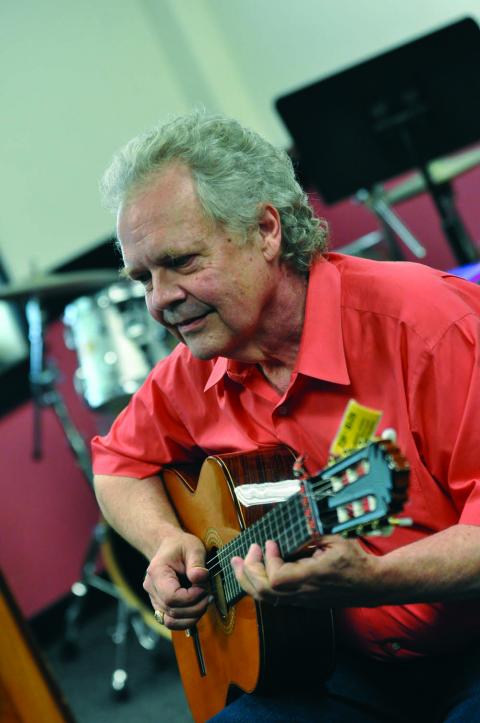"The Stars and Stripes Forever" for Solo Guitar

Guy Van Duser is a finger-style guitar specialist known for adapting the “stride” piano style to the guitar. He has performed and recorded as a soloist and in a duo with clarinetist Billy Novick. At Berklee, Van Duser teaches guitar arranging for songwriters and the Chet Atkins guitar lab.
Phil Farnsworth
-The Editors
Way back in the 1970s, around the time of the nation's bicentennial, a friend and I were playing guitars together at the kitchen table after dinner. We both play finger-style, and were "ragging the classics." By that I mean we were attempting to finger-pick any tune or melody we could think of: fragments of Mozart and Bizet, cola commercials, old TV themes, anything we could remember enough to play by ear. Eventually we happened on the trio theme of John Philip Sousa's famous march "The Stars and Stripes Forever." This is the tuneful section that begins in bar 39 (see music on page 41). Kids sing this melody as "Be Kind to Your Web-Footed Friends" with silly lyrics about ducks. Attempting to play it on the guitar was even more fun.
Once my friend left for the evening, instead of going to sleep, I found myself intrigued with the Sousa piece. Pretty soon I started wondering if I could play more of it than just that little fragment. Checking the communal record bin, I discovered that someone had left an LP of the Michigan State marching band, and there it was. Guitar in hand, I started listening to the recording, and before long I realized that many other parts of the arrangement were possible to play on my guitar. I worked on it until 6:00 A.M., and I was convinced that the entire march could be rendered on a single guitar. But it would take a huge amount of patient practice to pull it off as a performance piece.
I had been playing a lot of Scott Joplin's music in my guitar concerts. Joplin's rag "The Entertainer" had become a hit after it appeared in the soundtrack of the Academy Award-winning movie The Sting starring Paul Newman and Robert Redford. I thought to myself: Joplin wrote marches as well as piano rags, and Sousa wrote rags as well as marches, so why not? I figured it would be a big joke for the audience. But, of course, they didn't just laugh; they applauded wildly and clapped and stomped along. My version was a hit-provided I could get all the way through it on stage, which was a challenging prospect.
Finger-style guitar legend Chet Atkins heard about my version of the piece and invited me to his office at RCA Records in Nashville to play it for him. At his request, I made a cassette recording playing the piece at a slow tempo so he could learn it. Chet picked most of it up from the tape, after which I visited him again and we polished it up in his kitchen one afternoon. Chet was kind enough to include my arrangement in his shows, and he always gave me credit on stage for creating it.
This is probably the hardest piece I've ever tried to play on a guitar, but I've found that it is well worth the effort by creating personal satisfaction and by pleasing an audience. I've provided my entire arrangement for those who want to attempt it. As you learn the piece, I suggest that you proceed slowly and work on one section at a time, using careful repetition to teach your fingers the notes. This piece calls for lots of patience until all your fingers know where to go automatically. At that point, pick up the tempo and inject some energy into the playing.
If you compare my version to the marching-band original, you will notice that I didn't try to include all the parts played by the different horns and woodwinds. I did, however, work hard to include the prominent piccolo part (see bars 95 to 121). It's a challenge to play; even Chet said he had trouble with that section. My approach to the piece was to finger-pick the melody with alternating bass notes below and put lots of zing into the performance, pretending that I am an entire band. If you can get everyone listening to believe that along with you, you will have captured essence of what I hoped to convey.
Click here to hear Van Duser's live recording
Download the sheet music:




